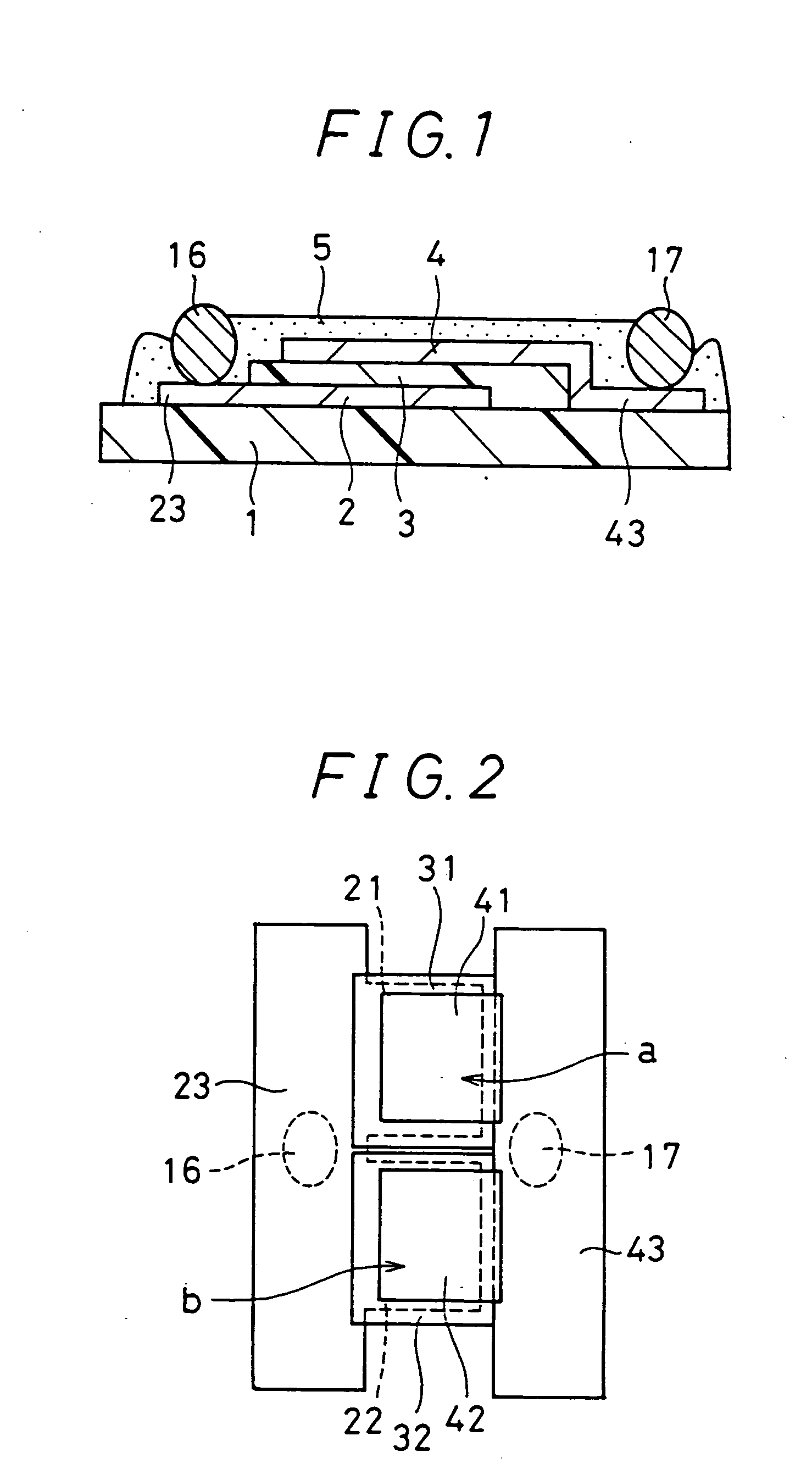Tunable thin film capacitor
a thin film capacitor and capacitor technology, applied in the direction of capacitors, semiconductor devices, transistors, etc., can solve the problems of inability to obtain a sufficiently wide variable range, inability to stabilize the dielectric constant of the dielectric layer, and inability to achieve sufficient dielectric constant control, etc., to achieve short time, low cost, and efficient fabrication
- Summary
- Abstract
- Description
- Claims
- Application Information
AI Technical Summary
Benefits of technology
Problems solved by technology
Method used
Image
Examples
embodiment 1
[0207] The tunable thin film capacitor shown in FIG. 2 was fabricated. On sapphire used as the support substrate 1, a substratum Ti layer and an upper-laid Au layer were formed as the lower electrode layers 21, 22 by the sputtering process. The substratum Ti layer is for enhancing the adherence between the support substrate 1 and the upper-laid Au layer, and, as for the thickness, the thickness of Ti was set to 0.05 μm, and the thickness of Au was set to 1 μm. This substratum electrode layer was processed by the photolithography technology to form the lower electrode layers 21, 22 and the lower terminal electrode layer 23 shown in FIG. 2. More specifically, a resist was applied to a predetermined shape and patterned by wet etching.
[0208] Subsequently, for the formation of the thin film dielectric layers 31, 32, (Ba, Sr) TiO3 was deposited to a thickness of 1 μm by the sputtering process, and, by the photolithography and wet etching processes, the thin film dielectric layers 31, 32 ...
embodiment 2
[0249] On a ceramic substrate, a TiO2 layer with a thickness of 20 nm and an Au film with a thickness of 0.3 μm were formed by the sputtering process under the condition that the deposition temperature be 250° C., and the Ar gas pressure be 5 mTorr. This Au film was processed to a predetermined shape by wet etching, whereby the first thin film substratum conductor layer 61 and the second thin film substratum conductor layer 62, which were both comprised of Au, could be formed.
[0250] Next, on the first thin film substratum conductor layer 61 and the second thin film substratum conductor layer 62 formed by Au thus formed, a thin film dielectric layer with a thickness of 0.15 μm was formed by processing a dielectric material represented by (Ba1-xSrx) TiO3 (wherein 02 gas pressure be 18 mTorr. Subsequently, by etching this thin film dielectric layer, the thin film dielectric layer 3 having a predetermined shape and covering the separation portion X between the first thin film substratu...
embodiment 3
[0275] In this tunable thin film capacitor, for example the thin film substratum conductor layers 82a, 82b, the thin film dielectric layer 3, and the thin film superstratum conductor layers 84a, 84b were successively formed on a ceramic substrate 1, respectively.
[0276] First, on the ceramic substrate 1 with a thickness of, e.g., 0.3 mm, a Pt film with a thickness of 0.3 μm was formed by the sputtering process under the condition that the deposition temperature be 600° C., and the Ar gas pressure be 10 mTorr. This Pt film was processed to a predetermined shape by dry etching, whereby the first and second thin film substratum conductor layers 82a, 82b made of Pt were formed.
[0277] Next, extending over the first thin film substratum conductor layer 82a and the second thin film substratum conductor layer 82b, both being comprised of Pt, the thin film dielectric layer 3 with a thickness of 0.3 μm was formed by sputtering a dielectric material represented by (Ba1-xSrx) TiO3 (wherein, 02...
PUM
 Login to View More
Login to View More Abstract
Description
Claims
Application Information
 Login to View More
Login to View More - R&D
- Intellectual Property
- Life Sciences
- Materials
- Tech Scout
- Unparalleled Data Quality
- Higher Quality Content
- 60% Fewer Hallucinations
Browse by: Latest US Patents, China's latest patents, Technical Efficacy Thesaurus, Application Domain, Technology Topic, Popular Technical Reports.
© 2025 PatSnap. All rights reserved.Legal|Privacy policy|Modern Slavery Act Transparency Statement|Sitemap|About US| Contact US: help@patsnap.com



